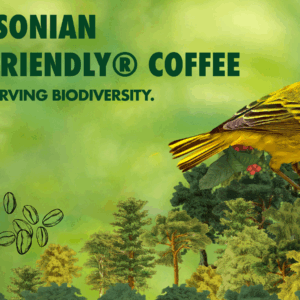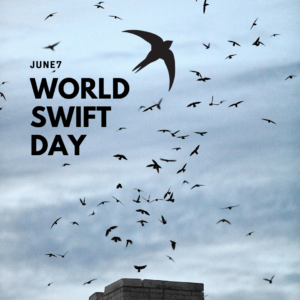Motus Tag Trip a Success!

Alex Bencke, Aly Hyder Ali, Vanessa Fiore, Ted Cheskey, Saeedeh Bani Assadi, Nancy Furber and Rick Ludkin
Nature Canada’s own Ted Cheskey, Aly Hyder Ali, Vanessa Fiore, and Alex Bencke visited the properties of three Purple Martin stewards in Southwestern Ontario to check up on the status of their birds from July 8 to 12. They started the trip by meeting up with Saeedeh Bani Assadi, a PhD student from the University of Manitoba, and headed to Mitchell’s Bay, Ontario, the first site on their week-long deployment trip.
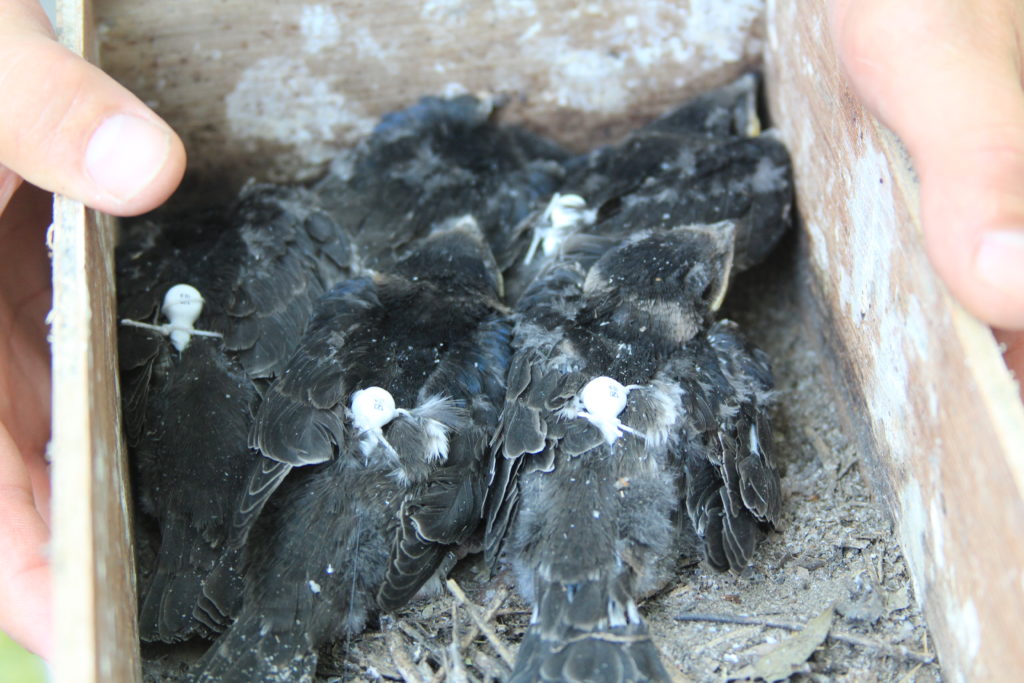
What is Motus Tagging?
The Motus (Latin word for movement) Wildlife Tracking System is a program of Bird Studies Canada in partnership with Acadia University that can track the movement and behaviour of small flying organisms across a wide range of landscapes. This is accomplished by mounting individually coded radio frequency tags (or “backpacks”) onto birds, and the signals emitted from the tags are then detected by receiver stations across Ontario and elsewhere. In simpler terms, Nature Canada made use of the Motus system last week to help us track Purple Martins when they leave their nesting colonies so that we can better understand their movements and what threats they might be facing.
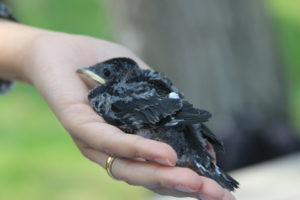
Why Purple Martins?
Purple Martins are a species of conservation concern because they are classified as aerial insectivores, a class of birds that has been shown to be the fastest declining of all bird groups in Canada since 1970. We have been working to help recover populations of Purple Martins for the past five years.
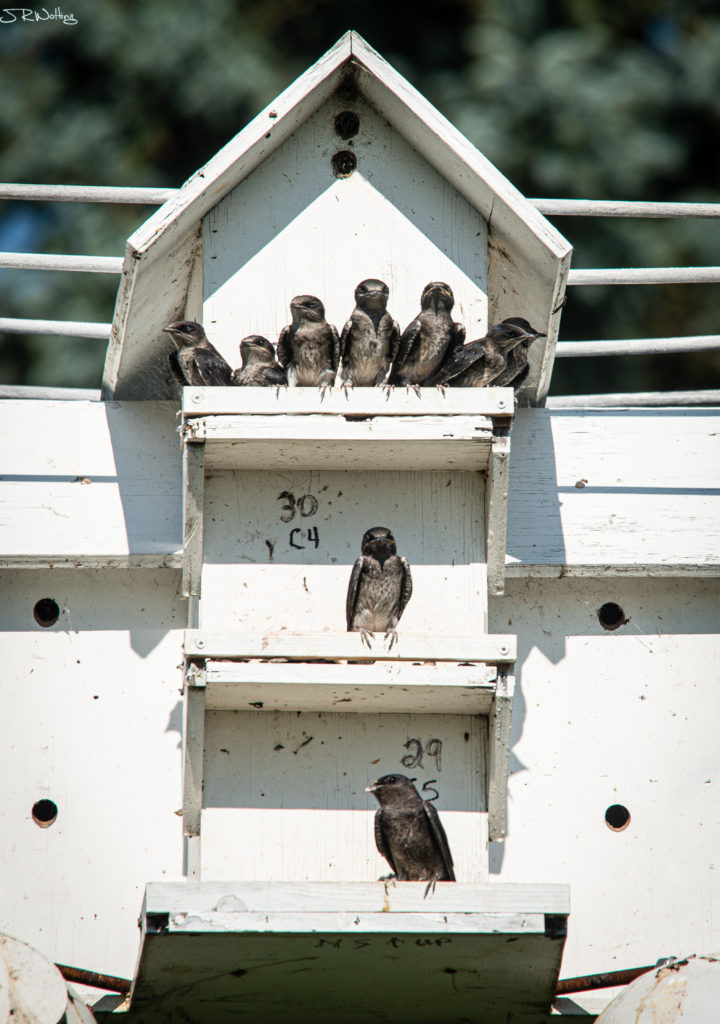
© Jeremy Wolting
This species needs our help in particular because, over time, they have become 100 percent dependent upon human-built housing for their nesting habitats east of the Rocky Mountains. This means that we as humans are responsible to look out for them and to help ensure their survival.
Motus in Action:
Our team began by carefully observing the housing units, waiting for adult Purple Martins to enter their nesting cavities. Once a bird entered the unit, they pulled a thin string that dropped a trap door over the entrance hole, closing off the entrance, and trapping the adult inside. From here, the “condo” was lowered, and the adult bird was extracted, placed in a cloth bag and carried to a sheltered table where it was weighed, measured, banded and fitted with a small radio transmitter to its back.
At each site, the goal was to capture and deploy about 15 to 20 tags on a mix of adult birds and nestlings that were between 16 and 22 days old. Ideally, they aimed to deploy tags on entire family groups (both parents and 3 to 5 young).
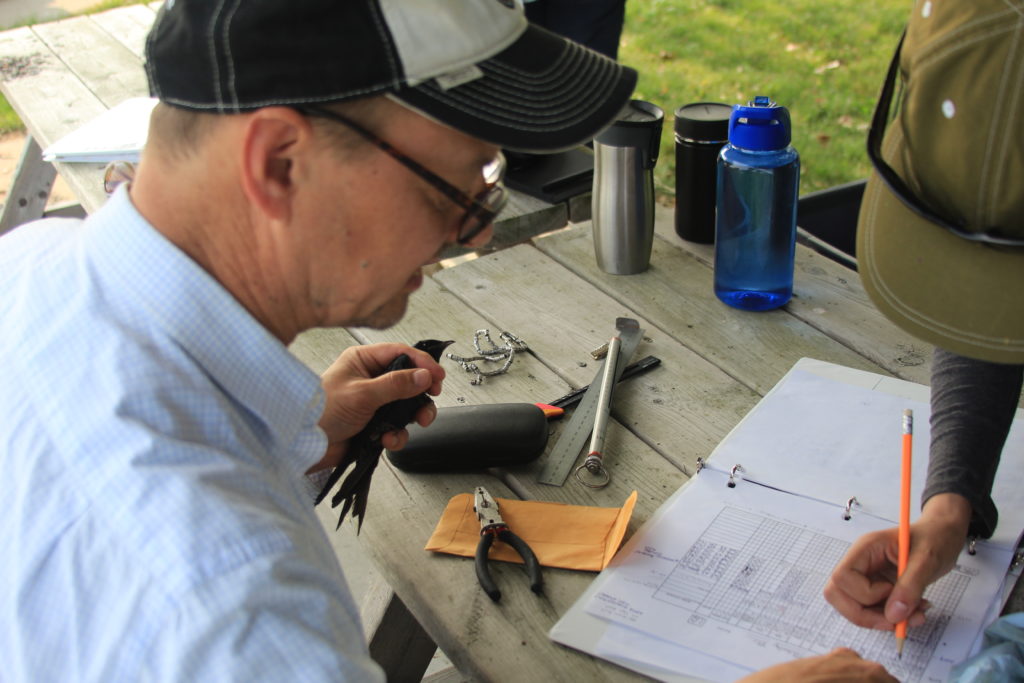
The transmitter weighs about half a gram, less than one percent of the birds’ weight, and they don’t slow the bird down or impede in any way on the bird’s life. The data (detections registered at the receiver stations), is collected remotely in a contact-free manner, and the tag harness often falls off on its own after several months, “We would not use a technology that would cause cause a bird to behave abnormally.” said Ted Cheskey, Naturalist Director of Nature Canada.
What We Did:
Tuesday morning’s work started at 7am, when the team began to collect the birds from their housing units and carefully equipped them with the tiny “backpacks.” A reporter for Chatham Daily News, Ellwood Shreve, joined the crew at 11:30am and covered the happenings in a wonderful descriptive article. The deployment was very successful with 18 tags on three entire families.
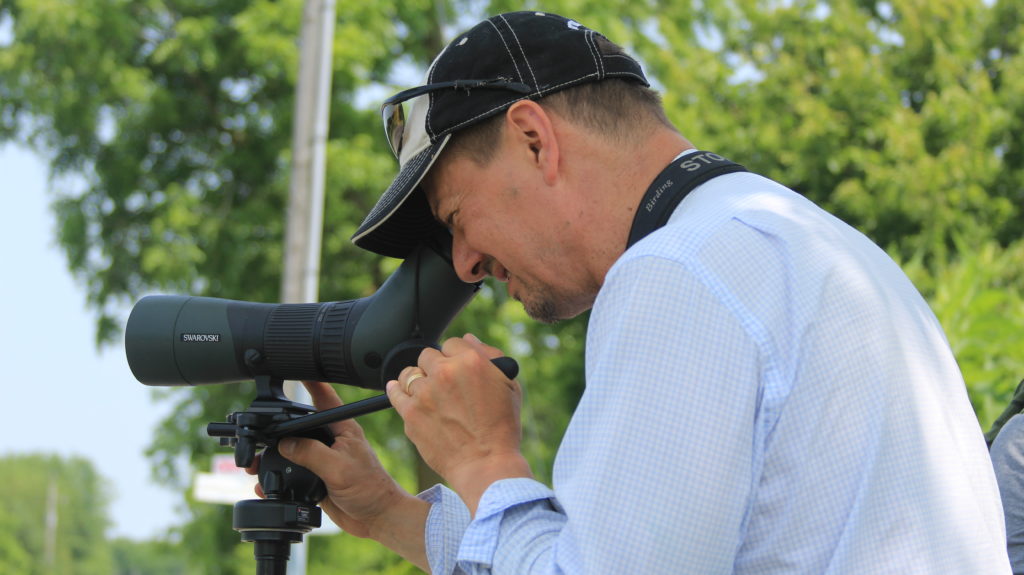
That evening they traveled near Port Burwell where they met with the landowner of Fairnorth Farms, Kathryn Boothby, to plan for the next day. The following morning began like the previous, with work finishing up around noon. CBC London Morning’s Kate Dubinski did a live interview of Ted before also interviewing the team and creating a story about the project on the CBC website. They successfully deployed sixteen tags at Fairnorth Farm.
Wrapping up the third day, the group headed to Ruthven Park near Cayuga to get organized for their final day of trapping and tagging. It was the next morning that offered the most challenges, the adults were not interested in entering the nesting cavities so the team settled with tagging juveniles, but determined not to miss an opportunity, planned to return at midnight when they hoped some of the adult birds would be resting.

The team practiced moving slowly in unison so as not to scare the birds away at night, and when they had finished rehearsing, they drove to visit a roost in Dunneville until nightfall. Returning to Ruthven, they set up and began their night capture. They were more successful this time, capturing three of the adults.
The group wrapped up work around 2am and headed back to their lodging for the night. Eager for a moment to relax, and inspired by their eerie and inspiring surroundings, Ted suggested that they watch the Michael Jackson “Thriller” music video before walking back to their residence.
Tired but full of smiles, the team left Cayuga the next morning and returned to Ottawa, ready to share their progress with the rest of Nature Canada’s staff.
“The tags will help us answer questions about what they do when they leave their colonies, because there’s a time gap between when they leave their nests and when they leave for Brazil. We know they use these very large roosts at night, and there is one near Dunnville where thousands of birds gather. They stop over, fatten up, and prepare themselves for migration. These need to be well managed and protected.”
–Ted Cheskey
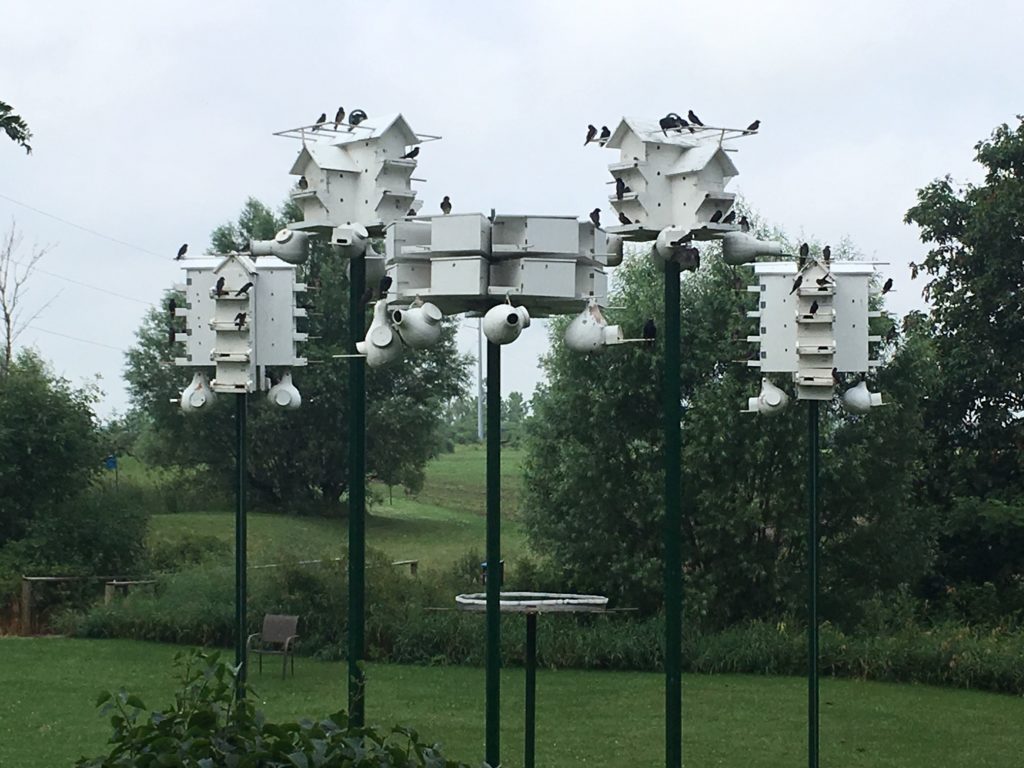
© Henry Wolting

